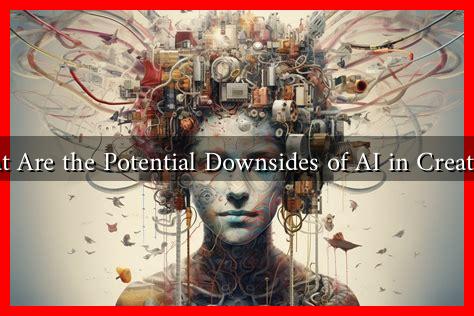-
Table of Contents
What Are the Potential Downsides of AI in Creativity
Artificial Intelligence (AI) has made significant strides in various fields, including creativity. From generating art and music to writing stories and scripts, AI tools are increasingly being used by artists, writers, and musicians. However, while AI can enhance creative processes, it also presents several potential downsides that warrant careful consideration. This article explores the challenges and risks associated with the integration of AI in creative endeavors.
1. Loss of Human Touch
One of the most significant concerns regarding AI in creativity is the potential loss of the human touch. Creativity is often deeply personal and subjective, reflecting individual experiences, emotions, and cultural contexts. AI-generated content may lack the nuanced understanding of human emotions and experiences, leading to:
- Generic Outputs: AI can produce content that is technically proficient but lacks originality or emotional depth.
- Reduced Authenticity: Audiences may find it challenging to connect with AI-generated works, perceiving them as less authentic.
For instance, while AI can compose music that mimics the style of famous composers, it may not capture the emotional resonance that a human composer brings to their work. A study by the Frontiers in Psychology journal highlights that human-created art often evokes stronger emotional responses compared to AI-generated art.
2. Ethical Concerns and Copyright Issues
The rise of AI in creative fields raises significant ethical questions, particularly regarding ownership and copyright. When an AI generates a piece of art or music, who owns the rights to that creation? This ambiguity can lead to:
- Legal Disputes: Artists may find themselves in legal battles over the ownership of AI-generated works.
- Plagiarism Risks: AI systems often learn from existing works, which can lead to unintentional plagiarism.
For example, the case of the AI-generated artwork “Edmond de Belamy,” which was sold at auction for $432,500, sparked debates about the ownership of AI-generated art. The creators of the AI model used existing artworks to train the system, raising questions about the originality of the output.
3. Job Displacement in Creative Industries
As AI tools become more sophisticated, there is a growing concern about job displacement in creative industries. While AI can assist in the creative process, it can also replace certain roles, leading to:
- Reduced Job Opportunities: Roles such as graphic designers, copywriters, and even musicians may face competition from AI tools.
- Devaluation of Human Creativity: As AI-generated content becomes more prevalent, the value placed on human-created works may diminish.
A report by the McKinsey Global Institute suggests that up to 30% of jobs in the U.S. could be automated by 2030, with creative roles being among those at risk.
4. Dependence on Technology
Another downside of integrating AI into creative processes is the potential for over-reliance on technology. This dependence can lead to:
- Stifled Innovation: If creators rely too heavily on AI tools, they may become less inclined to experiment and innovate.
- Skill Degradation: As AI takes over certain tasks, human skills in creativity may deteriorate over time.
For instance, writers who rely on AI for generating ideas may find their own creative thinking abilities diminishing, leading to a cycle of dependence that hampers originality.
Conclusion
While AI has the potential to revolutionize creative fields, it is essential to recognize and address the potential downsides associated with its use. The loss of the human touch, ethical concerns, job displacement, and dependence on technology are critical issues that need to be navigated carefully. As we continue to explore the intersection of AI and creativity, it is crucial to strike a balance that preserves the essence of human creativity while leveraging the benefits of technological advancements. By doing so, we can ensure that AI serves as a tool for enhancement rather than a replacement for the rich tapestry of human creativity.

